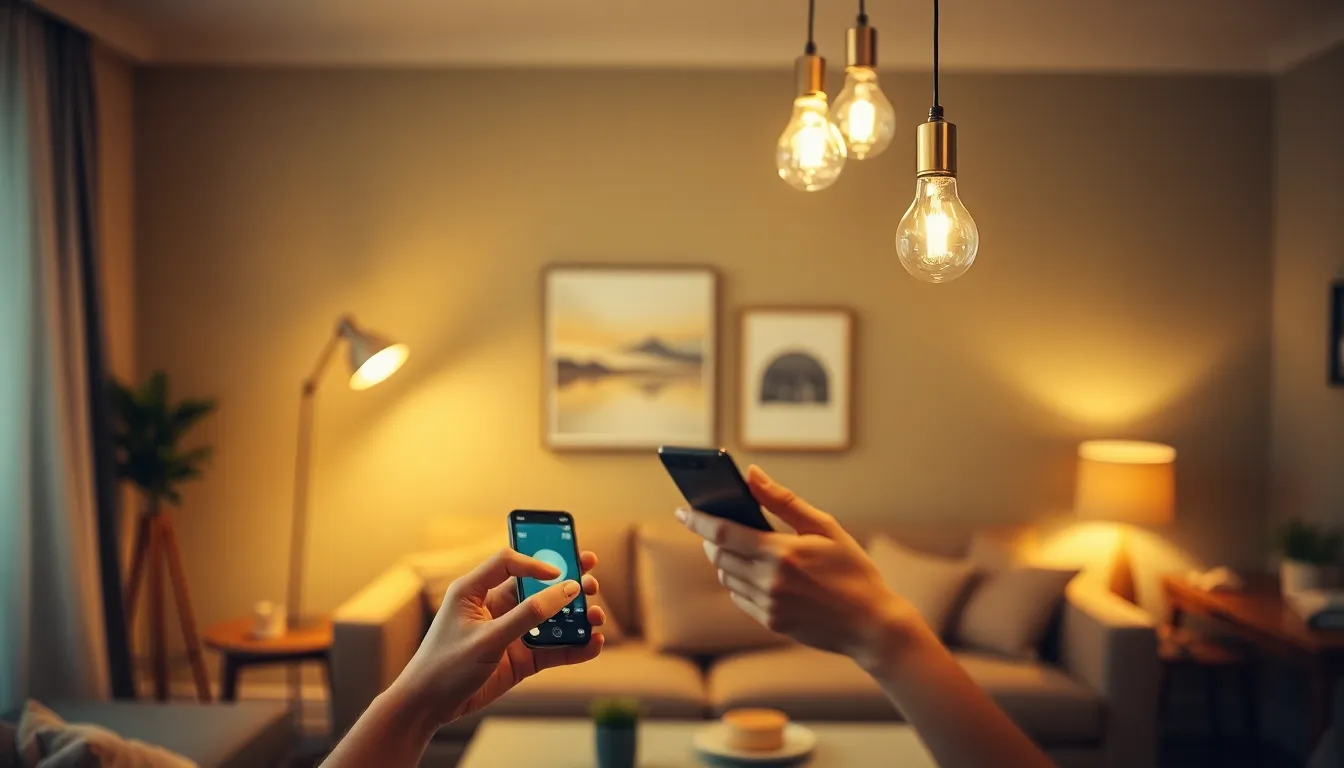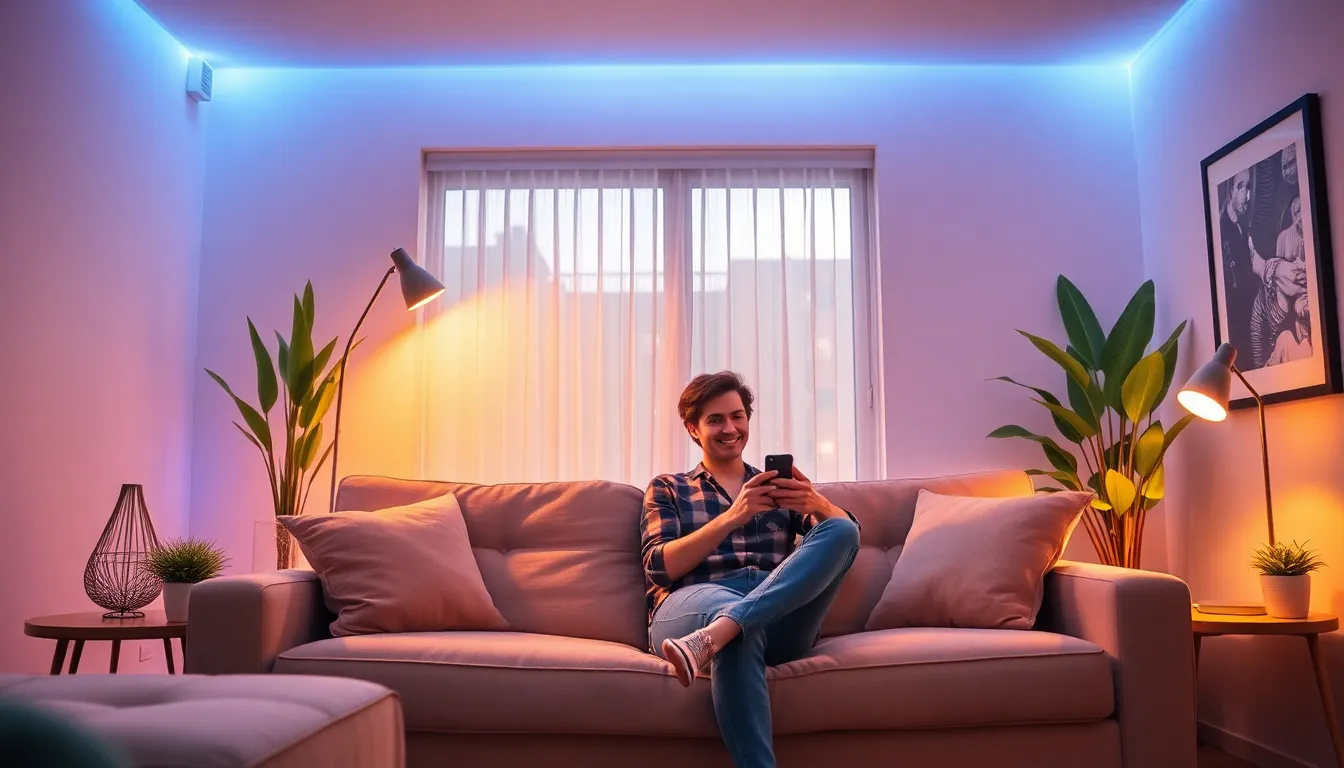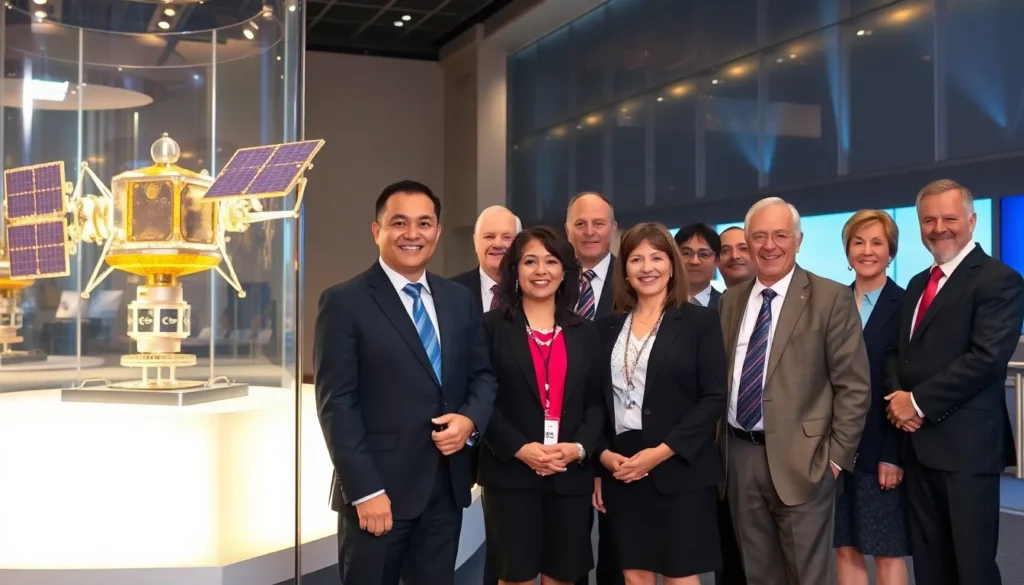Imagine walking into a room and having the lights turn on as if they’re your personal butlers. Smart lighting solutions are here to transform mundane spaces into dazzling environments that respond to your every whim. Gone are the days of fumbling for switches in the dark or arguing with your partner about who left the lights on. Now, with just a voice command or a tap on your phone, you can set the mood for a cozy movie night or a lively dance party.
Table of Contents
ToggleOverview of Smart Lighting Solutions
Smart lighting solutions revolutionize how people interact with their home and work environments. These systems offer customizable lighting experiences, aligning with users’ preferences for comfort and functionality. Enhanced control options include voice activation through digital assistants like Amazon Alexa and Google Assistant. Smartphone applications enable users to adjust brightness, color temperature, and lighting schedules from anywhere, ensuring optimal energy efficiency.
Automatic adjustments prove beneficial in various scenarios. For instance, smart lights can dim during movie nights, enhancing the viewing experience. During parties, vibrant colors can create an inviting atmosphere, making gatherings more enjoyable. Additionally, schedule features allow users to set lighting to mimic natural sunlight, promoting well-being and productivity.
Energy consumption can significantly decrease with intelligent solutions. Smart bulbs use up to 80% less energy than traditional incandescent options, contributing to lower utility bills. Many smart lighting systems also offer integration with home security, allowing lights to simulate occupancy when users are away.
Data consistently shows that smart lighting can reduce conflicts over light use in shared spaces. Automated settings prevent disputes about lights being left on or off, fostering a peaceful coexistence among inhabitants. Together, these attributes not only enhance convenience but also support sustainable living practices, making smart lighting solutions a vital component of modern homes.
Benefits of Smart Lighting Solutions

Smart lighting solutions provide numerous advantages, enhancing both efficiency and user experiences. Key benefits include energy efficiency and enhanced convenience.
Energy Efficiency
Smart lighting significantly lowers energy consumption. Smart bulbs consume up to 80% less energy than traditional incandescent or fluorescent bulbs. These systems often feature scheduling capabilities that allow lights to turn off when not needed, further reducing waste. Dimming options also help achieve reduced energy use, as lower brightness levels typically consume less power. Users benefit from lower utility bills that result from these energy savings. Long-lasting smart bulbs extend lifespan, often lasting over 15,000 hours compared to only 1,000 hours for standard bulbs. Sustainable living practices are supported through decreased carbon footprints, promoting environmental conservation.
Enhanced Convenience
Smart lighting offers unparalleled convenience through advanced control. Voice commands enable users to adjust lighting without physical interaction. Utilizing smartphone applications allows for adjustments from anywhere within the home or office. Users can create customizable lighting scenes to suit specific activities or moods. Integration with smart home systems enhances usability, allowing for synchronized lighting with other devices, like thermostats or security systems. Automated lighting changes align with daily routines, promoting organization and comfort. Users also gain peace of mind with features that simulate occupancy, deterring potential intruders when they are away.
Types of Smart Lighting Solutions
Smart lighting solutions come in various forms, each offering unique benefits for enhancing environments. Users can select from smart bulbs and smart fixtures, depending on their preferences and requirements.
Smart Bulbs
Smart bulbs represent one of the most accessible options in the smart lighting realm. These LED bulbs connect easily to home Wi-Fi networks and allow users to control brightness, color, and scheduling through apps or voice commands. Many smart bulbs support integrations with popular digital assistants, enabling seamless voice activation. Users appreciate that smart bulbs consume up to 80% less energy than traditional bulbs, promoting energy efficiency. Brands like Philips Hue and LIFX provide diverse options that cater to various lighting needs. Durability is another advantage; smart bulbs can last over 15,000 hours, significantly outpacing standard bulbs.
Smart Fixtures
Smart fixtures offer a more integrated lighting solution for users looking to upgrade their existing setups. Products like smart ceiling lights, wall sconces, and recessed lighting come equipped with smart technology built into the fixtures. These fixtures offer features such as adjustable color temperatures and dimming capabilities, enhancing ambiance based on activities or moods. Smart fixtures often work in conjunction with smart home systems, allowing users to automate lighting based on schedules or occupancy. High-end brands, such as Sengled and Ecosmart, provide stylish designs that blend with home decor. Additionally, energy efficiency remains a critical advantage, with smart fixtures minimizing energy waste compared to traditional lighting.
Integration with Smart Home Systems
Smart lighting solutions seamlessly integrate with smart home systems, enhancing user convenience and personalization. Compatibility with various devices ensures a cohesive experience.
Compatibility with Voice Assistants
Smart lights function effortlessly with popular voice assistants like Amazon Alexa, Google Assistant, and Apple HomeKit. Users can employ simple voice commands to control the lighting, adjusting brightness or changing colors without lifting a finger. Many smart bulbs offer customizable settings, allowing for unique commands tailored to individual preferences. Voice activation promotes accessibility, particularly for those with mobility challenges. This compatibility establishes strong connectivity, turning lighting control into an integral part of the smart home ecosystem.
Controlling Smart Lights via Apps
Mobile applications provide a comprehensive platform for managing smart lighting solutions. Users can control settings from anywhere, making adjustments on-the-go via smartphone or tablet. Scheduling features enhance convenience, allowing lights to turn on or off automatically at specified times. Customizable scenes can be created for various activities, such as relaxing with soft lighting in the evening. App integration also often includes energy monitoring tools, helping users track consumption and reduce costs. Enhancing functionality, many apps incorporate remote access, ensuring users maintain control, even when away from home.
Challenges and Considerations
Smart lighting solutions present several challenges and considerations that users must navigate before implementation.
Installation Issues
Installation of smart lighting can present unique challenges. Users often encounter compatibility issues between smart bulbs and existing fixtures. Complex wiring configurations in older homes may necessitate professional installation. Accessibility of Wi-Fi networks also plays a crucial role; weak signals can disrupt connectivity, leading to functionality problems. Additionally, setting up multiple devices typically requires an understanding of app interfaces and network connections, which some users may find daunting. Balancing these installation hurdles with the benefits of smart lighting is essential for a successful transition.
Cost Implications
Cost considerations significantly impact the adoption of smart lighting solutions. Initial investment for high-quality smart bulbs can be substantially higher than traditional bulbs, sometimes ranging from $15 to $50 per bulb. Although energy-efficient smart bulbs can lead to savings on utility bills—up to 80% less energy compared to traditional options—users must still assess the upfront costs against long-term savings. Ongoing expenses, such as subscription services for enhanced features or additional smart devices, should also factor into the budget. Weighing these financial implications against the anticipated benefits is crucial for informed decision-making.
Smart lighting solutions are transforming how people interact with their environments. By offering unparalleled convenience and energy efficiency, these systems cater to modern lifestyles while promoting sustainability. Users can effortlessly create the ideal atmosphere for any occasion and enjoy significant savings on energy bills.
Though challenges like installation and initial costs exist, the long-term benefits far outweigh these hurdles. As technology continues to evolve, smart lighting will likely become even more accessible and integrated into daily life, making it an essential investment for those looking to enhance their homes and well-being. Embracing smart lighting is not just about embracing technology; it’s about creating a more efficient and enjoyable living space.




